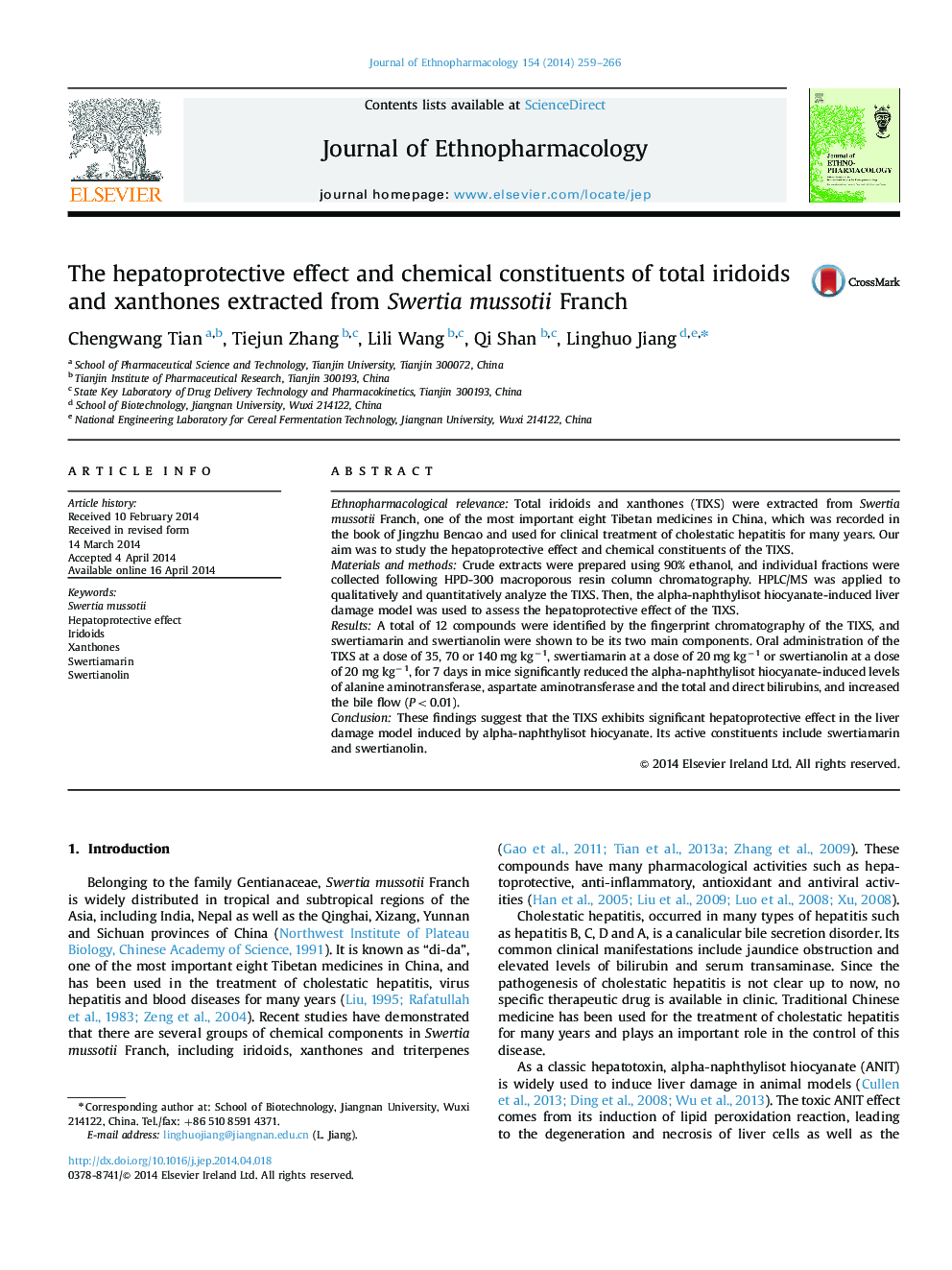| Article ID | Journal | Published Year | Pages | File Type |
|---|---|---|---|---|
| 2545202 | Journal of Ethnopharmacology | 2014 | 8 Pages |
Ethnopharmacological relevanceTotal iridoids and xanthones (TIXS) were extracted from Swertia mussotii Franch, one of the most important eight Tibetan medicines in China, which was recorded in the book of Jingzhu Bencao and used for clinical treatment of cholestatic hepatitis for many years. Our aim was to study the hepatoprotective effect and chemical constituents of the TIXS.Materials and methodsCrude extracts were prepared using 90% ethanol, and individual fractions were collected following HPD-300 macroporous resin column chromatography. HPLC/MS was applied to qualitatively and quantitatively analyze the TIXS. Then, the alpha-naphthylisot hiocyanate-induced liver damage model was used to assess the hepatoprotective effect of the TIXS.ResultsA total of 12 compounds were identified by the fingerprint chromatography of the TIXS, and swertiamarin and swertianolin were shown to be its two main components. Oral administration of the TIXS at a dose of 35, 70 or 140 mg kg−1, swertiamarin at a dose of 20 mg kg−1 or swertianolin at a dose of 20 mg kg−1, for 7 days in mice significantly reduced the alpha-naphthylisot hiocyanate-induced levels of alanine aminotransferase, aspartate aminotransferase and the total and direct bilirubins, and increased the bile flow (P<0.01).ConclusionThese findings suggest that the TIXS exhibits significant hepatoprotective effect in the liver damage model induced by alpha-naphthylisot hiocyanate. Its active constituents include swertiamarin and swertianolin.
Graphical abstractFigure optionsDownload full-size imageDownload high-quality image (503 K)Download as PowerPoint slide
